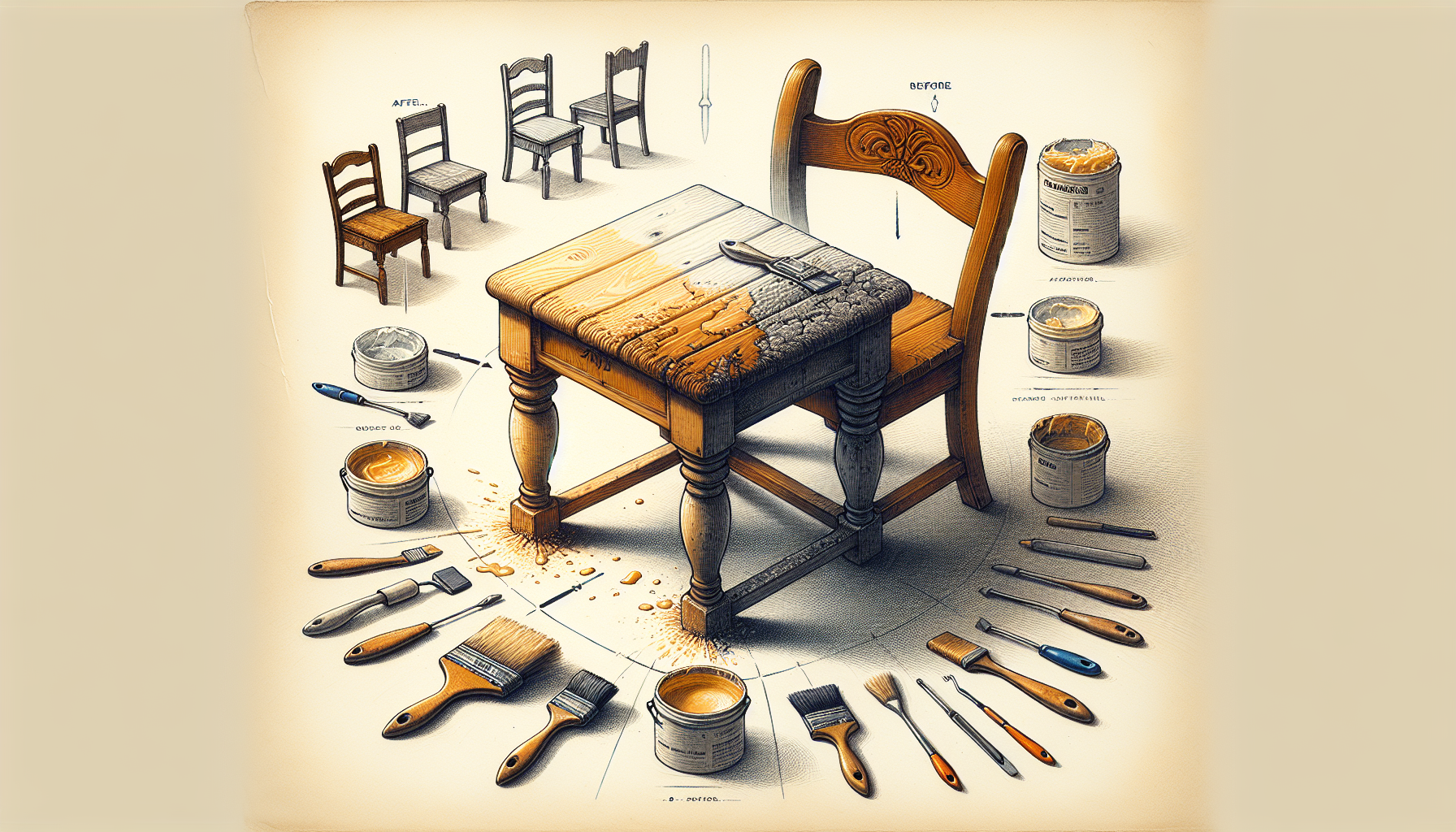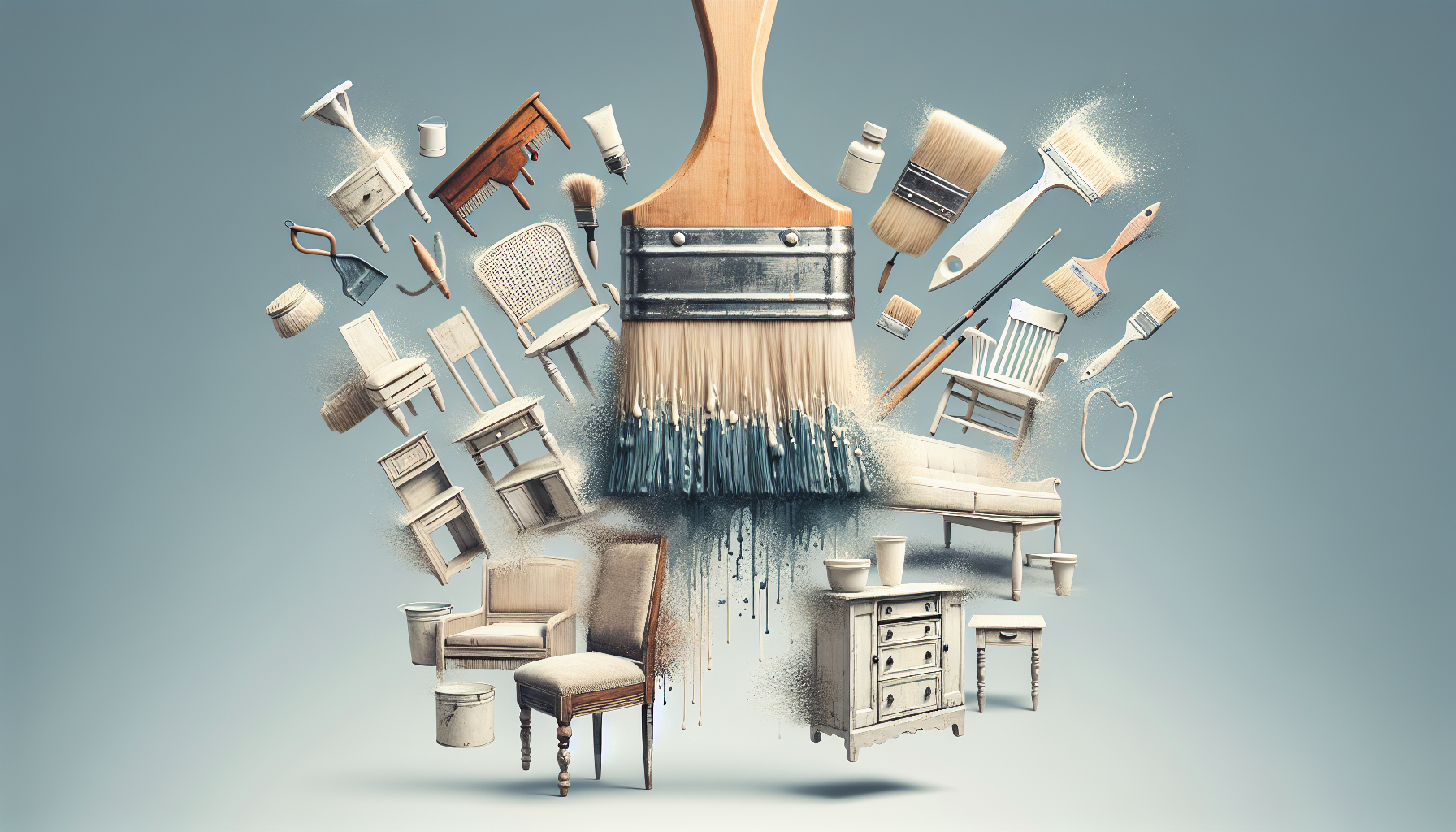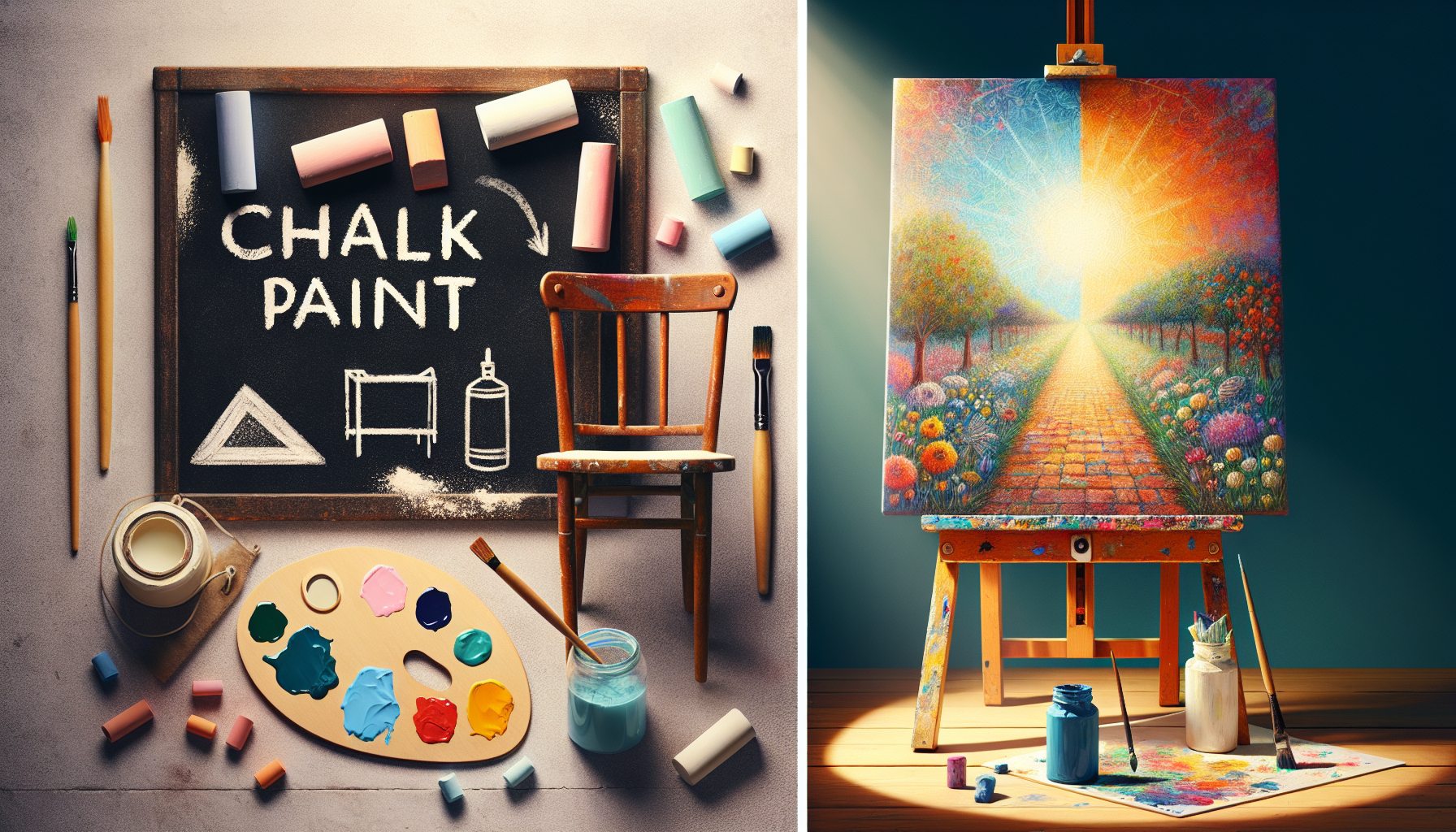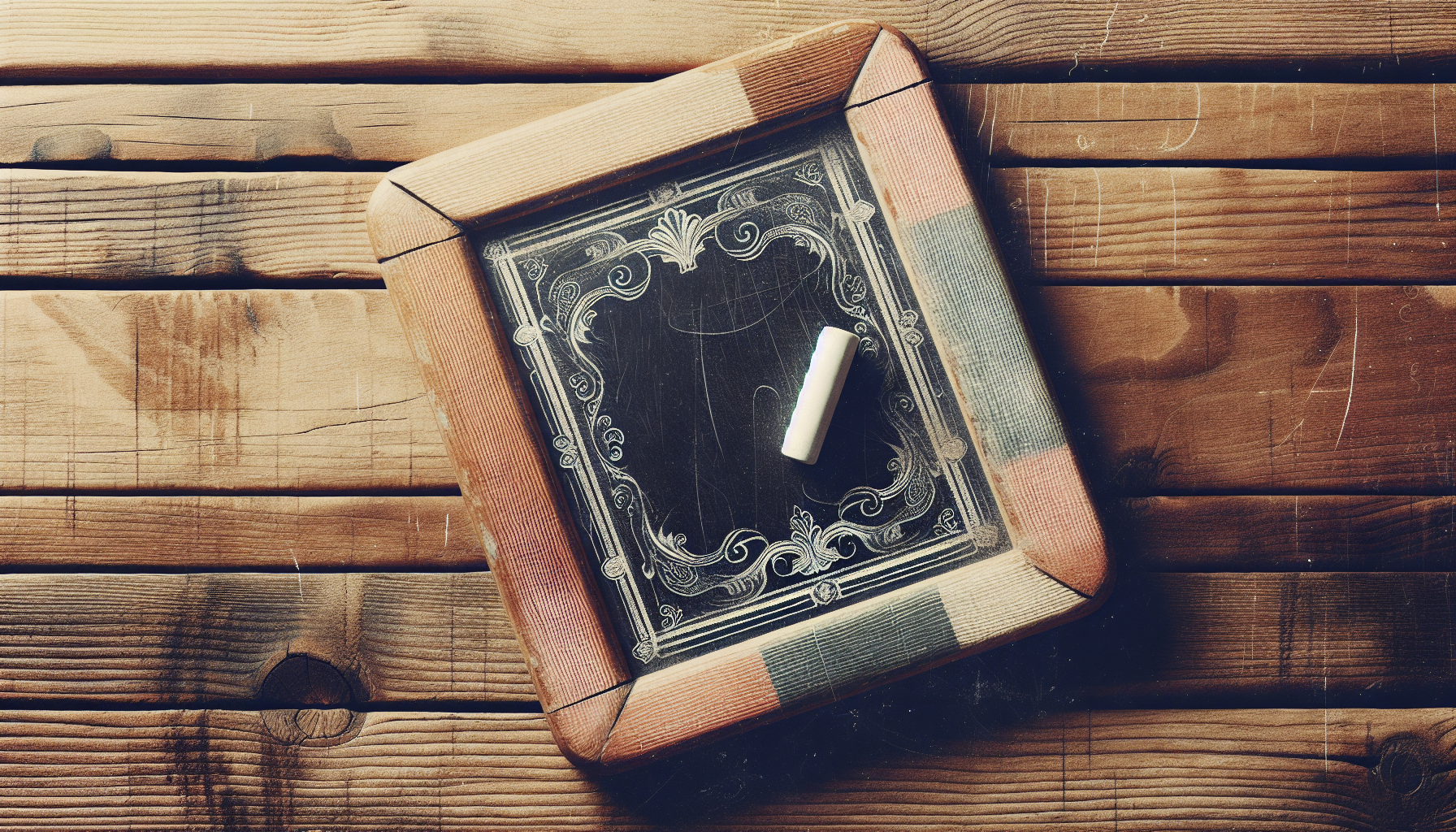In this informative article, you will discover the most effective methods for removing wax from chalk painted furniture. Whether you are a homeowner looking to restore a vintage piece or a professional furniture refinisher seeking expert advice, this article provides clear and concise instructions to help you achieve remarkable results. By following these step-by-step techniques, you can ensure the removal of wax buildup while preserving the integrity and beauty of your chalk painted furniture.

Why Remove Wax from Chalk Painted Furniture
Preserving the Integrity of Chalk Paint
When it comes to chalk painted furniture, the wax serves as a protective finish that enhances the overall appearance and durability of the paint. However, over time, the wax can accumulate and create an unwanted build-up on the surface. Removing this excess wax becomes necessary to preserve the integrity of the chalk paint and ensure that it maintains its original beauty.
Getting Rid of Unwanted Build-up
Excessive wax build-up can result in a rough texture or a dull appearance on your chalk painted furniture. This can take away from the smooth and vibrant finish that chalk paint is known for. By removing the wax build-up, you can restore the furniture’s original sleekness and shine, allowing the true beauty of the chalk paint to shine through.
Preparing for Repainting or Refinishing
If you have plans to repaint or refinish your chalk painted furniture, removing the wax is an essential step in the preparation process. The presence of wax can interfere with the adhesion of new paint or stain, leading to peeling, cracking, or uneven application. By thoroughly removing the wax, you create a clean canvas that ensures a flawless finish and maximizes the longevity of your new paint or stain.
Identifying Wax Build-up on Chalk Painted Furniture
Inspecting the Surface
Before you begin the process of removing wax, it is crucial to inspect the surface of your chalk painted furniture. Look for any signs of build-up, such as an uneven texture or a hazy appearance. These visual cues will help you determine the extent of the wax accumulation and guide you in selecting the most effective removal method.
Identifying Rough Texture or Dull Appearance
Excess wax build-up often leads to a rough and bumpy texture on chalk painted furniture. If you run your hand over the surface and notice any irregularities or a lack of smoothness, it indicates the presence of wax build-up. Additionally, a dull or cloudy appearance can be a telltale sign of wax accumulation. By identifying these characteristics, you can address the issue promptly and restore the furniture’s original luster.
Noting Color Changes or Discoloration
Another indicator of wax build-up on chalk painted furniture is a change in color or discoloration. If you notice any areas where the color seems altered or uneven, it could be a result of wax seeping into the paint layers. This can detract from the overall aesthetic of the furniture and necessitate the removal of wax to achieve a uniform and visually appealing finish.
Choosing the Right Tools and Materials
Before you embark on the process of wax removal, it is crucial to gather the appropriate tools and materials. Having the right supplies at hand will make the process more efficient and effective, ensuring that you achieve the desired results without causing damage to the furniture.
Soft Cotton or Microfiber Cloth
A soft cotton or microfiber cloth is essential for various stages of the wax removal process. It allows for gentle cleaning and wiping without scratching the surface of the chalk paint. Make sure the cloth is clean and free from any debris to avoid introducing additional particles that could further mar the finish.
Mild Soap or Detergent
Using a mild soap or detergent is a safe and effective means of removing wax from chalk painted furniture. It helps break down the wax and eliminate any dirt or grime that may have accumulated along with it. Choose a soap or detergent that does not contain harsh chemicals or abrasives to avoid damaging the paint.
White Vinegar
White vinegar is a versatile and natural cleaning agent that can aid in the removal of wax. Its acidic properties help dissolve the wax, making it easier to wipe away. Vinegar is particularly useful for addressing stubborn or thick wax build-up.
Clean Water
Clean water is a fundamental component of the wax removal process. It is necessary for diluting cleaning solutions, rinsing off surfaces, and ensuring that no residue remains after the wax removal is complete. Use distilled water to minimize the risk of introducing impurities or minerals that could affect the finish.
Plastic Scraper or Putty Knife
A plastic scraper or putty knife can be useful for gently scraping away stubborn wax from the surface of chalk painted furniture. These tools help lift the wax without causing damage to the underlying paint. Exercise caution when using them to avoid scratching or gouging the surface.
Fine-grit Sandpaper
In some cases, a fine-grit sandpaper may be necessary to remove wax build-up that has penetrated deep into the chalk paint layers. Sandpaper can effectively smooth out rough textures or remove excess wax when used carefully. Ensure that you select an appropriate grit that is gentle enough not to damage the underlying paint.
Mineral Spirits or Paint Thinner
Mineral spirits or paint thinner is a stronger solvent that can be used as a last resort for stubborn wax build-up. However, exercise caution when using these chemicals, as they can also strip away the chalk paint if not used properly. Always test in a small, inconspicuous area before applying to the entire surface.
Preparation before Wax Removal
Cleaning the Surface
Before you begin the wax removal process, it is essential to clean the surface of the chalk painted furniture. Use a soft cloth dampened with mild soap or detergent to gently wipe away any surface dirt or debris. This initial cleaning step ensures that you are working with a clean canvas and minimizes the risk of scratching the paint during wax removal.
Protecting Surrounding Area
To prevent any accidental damage to surrounding areas or nearby objects, it is advisable to protect them before starting the wax removal process. Place a drop cloth or plastic sheeting around the furniture to catch any drips or spills. This precautionary measure ensures that no cleaning agents or wax residue comes into contact with unintended surfaces.
Testing in an Inconspicuous Area
Before using any cleaning solutions or techniques on the entire surface, it is prudent to conduct a patch test in an inconspicuous area. Apply the chosen wax removal method on a small portion of the furniture to ensure that it does not cause any adverse effects, such as paint discoloration or damage. This test allows you to adjust your approach if necessary and proceed with confidence.
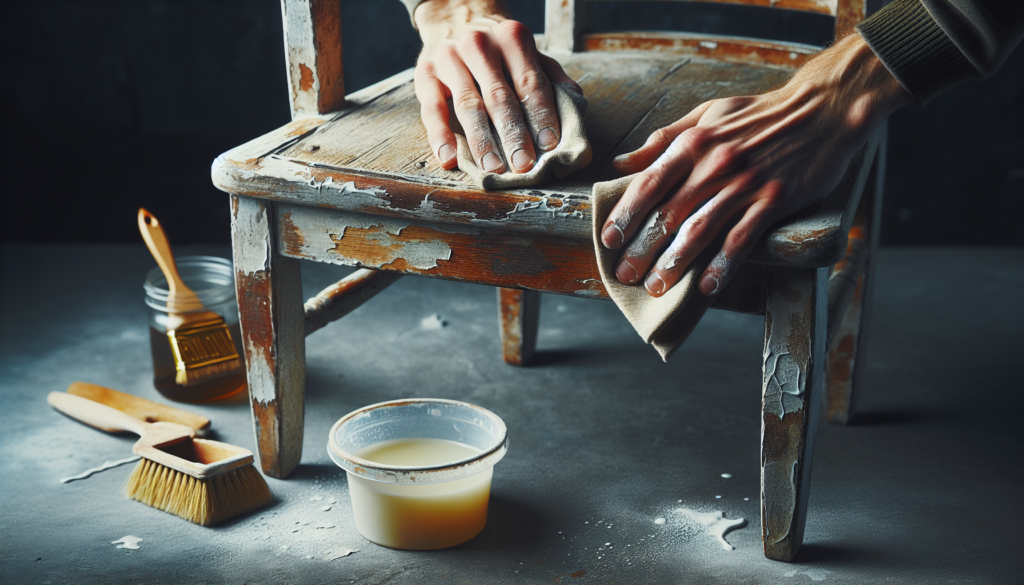
Methods for Removing Wax from Chalk Painted Furniture
Soap and Water Method
The soap and water method is a gentle and straightforward approach to removing wax build-up from chalk painted furniture.
Mixing Soap and Water
In a bucket or basin, mix a small amount of mild soap or detergent with warm water. Avoid using excessive soap, as it can leave behind residue and require additional rinsing.
Applying the Mixture
Dip a soft cloth into the soapy water and wring out any excess liquid. Gently apply the damp cloth to the waxed surface, ensuring even coverage.
Scrubbing Gently
Using gentle circular motions, lightly scrub the waxed surface with the damp cloth. This action helps the soap break down the wax and lift it from the chalk paint.
Wiping Clean
After scrubbing, rinse the cloth with clean water and use it to wipe away any remaining soap residue. Repeat the process if necessary until the wax is entirely removed. Ensure that the surface is thoroughly dry before proceeding with any additional refinishing or repainting.
Vinegar and Water Method
The vinegar and water method is particularly effective for stubborn wax build-up and areas with discoloration.
Creating a Vinegar and Water Solution
In a spray bottle, mix equal parts white vinegar and water. This solution provides the acidity necessary to dissolve the wax without damaging the chalk paint.
Applying the Solution
Spray the vinegar and water solution directly onto the waxed surface. Ensure even coverage, focusing on areas with particularly thick or discolored wax build-up.
Scrapping away the Wax
Using a plastic scraper or putty knife, gently scrape away the softened wax. Take care not to apply excessive pressure or force, as this can damage the underlying paint.
Drying the Surface
After removing the wax, wipe the surface clean with a soft, dry cloth. Allow the furniture to air dry completely before proceeding with any further refinishing or repainting.
Plastic Scraper Method
The plastic scraper method is ideal for removing localized areas of wax build-up or stubborn residue.
Using a Plastic Scraper or Putty Knife
Ensure that the plastic scraper or putty knife is clean and free from any sharp edges or rough spots that could damage the paint. Gently scrape the affected areas, applying minimal pressure to avoid scratching the paint.
Scraping off the Wax
With a steady hand, scrape away the wax from the surface of the chalk paint. Work in small sections to prevent accidental damage to the surrounding areas. Once the wax is lifted, wipe the furniture clean with a soft, dry cloth.
Sandpaper Method
The sandpaper method is suitable for removing deeply ingrained or stubborn wax build-up that cannot be easily removed through other methods.
Selecting the Appropriate Grit
Choose a fine-grit sandpaper with a smooth texture to minimize the risk of scratching or damaging the underlying paint. Avoid using coarse sandpaper, as it can create deep scratches or cause paint removal.
Sanding the Surface
Gently sand the waxed surface in a back-and-forth motion, focusing on the areas with the most significant build-up. Be careful not to press too hard or apply excessive force, as this can lead to paint damage. Wipe away the dust and residue regularly to assess your progress.
Wiping off Dust
After sanding, use a soft, dry cloth to wipe away any dust or residue left behind. Thoroughly clean the surface to ensure the removal of all traces of wax. Once complete, the furniture is ready for refinishing or repainting.
Mineral Spirits Method
The mineral spirits method should be used cautiously and as a last resort for persistent wax build-up.
Applying Mineral Spirits
Dampen a clean cloth with mineral spirits or paint thinner. Gently rub the cloth over the waxed surface, ensuring even coverage. Exercise caution, as these chemicals can strip away the chalk paint if not used properly.
Using a Cloth to Wipe Away the Wax
After applying the mineral spirits, use a separate clean cloth to wipe away the softened wax. Be thorough in your cleaning to remove any remaining residue. Ensure that the furniture is dry before proceeding with any refinishing or repainting.
By following these methods and utilizing the appropriate tools and materials, you can effectively and safely remove wax build-up from chalk painted furniture. Whether you are preserving the integrity of the chalk paint or preparing for a fresh coat, a clean and well-maintained surface will ensure that your furniture looks its best for years to come.
